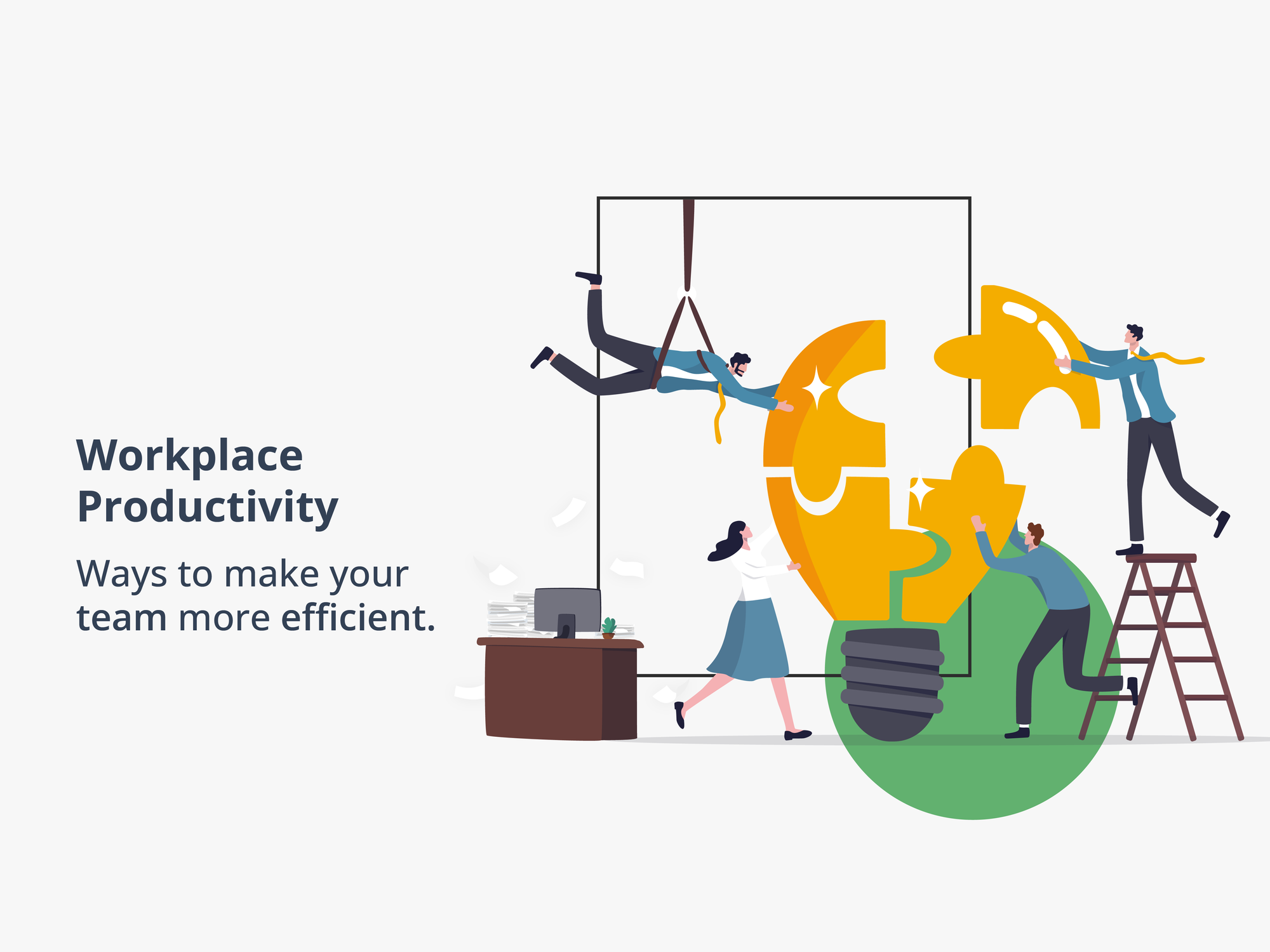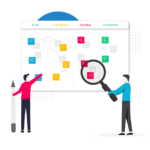
Jordan Cohen, a productivity expert, says, “In today’s complex and collaborative workplace, the real challenge is to manage not just your personal workload but the collective one.”
But why is productivity important in the workplace?
When a company is productive, it increases profitability and lowers production costs, which endorses proactivity and talent. The more productive a workplace is, the easier it is to establish organizational growth and create a healthy work environment.
Now the question is, what is the secret to employee productivity?
No worries!
Here are a few ways to make your team more efficient in workplace.
Ready to start?
How to enhance employee productivity
To help you cut through the noise, here we’ve selected some work productivity techniques to make your team more efficient. However, let us tell you, this is not all. Here are some practical tips to increase the productivity of your employees –
- Align daily work to goals
A lack of strategy can kill your company. According to a study conducted by Clear Company, only 14% of companies have employees who understand the organization’s strategy, goals, and objectives. For individuals and teams to be effective, one of the key actions is to set clear goals aligned with the company’s business objectives that are being pursued. And the employees who have clarity on how their work fits into the company’s bigger picture tend to be more accountable and perform 2x better than before.
In this sense, it is worth exploring the OKR (Objectives and Key Results) methodology that connects employee growth with a common goal and ensures team alignment by eliminating information silos. The idea behind OKR is to align daily progress with the overarching purpose and measure the outcomes at the end of the quarter to analyze whether the objectives are met or not. Furthermore, the OKR also helps to create alignment through cross-functional OKRs by imbibing a sense of collaboration and improving employee engagement. This way, companies can ensure that overall objectives are achieved, and outcomes are tracked timely.
Amoga goal management is a powerful goal setting and performance enhancement tool that helps to prioritize the company’s goals and employee growth by bridging the gap between strategy and execution. Ultimately, we assist organizations in building an agile system resulting in increased productivity. - Work simplification
Everyone here is well aware of the term ‘micromanagement’ in the corporate world. But how many of you know about ‘micro productivity’?
Well, micro productivity is nothing but a process of breaking down large, complicated tasks into smaller sub-tasks, so that anyone can accomplish their to-do list items quickly and improve productivity. This way, the complex work is simplified, and the sub-tasks can be accurately tracked independently in well-defined chunks.
Similarly, at Amoga, we simplify the work by breaking the dreaded tasks into simple atomic tasks and unify work in a single platform along with the process guides (Instructions, training material) for each sub-task. Ultimately, this process guide acts as a guidebook for employees through which they can start performing instantly from the day of onboarding.
The benefits of simplifying complex work are –
- Helps reduce work stress and lessen the workload by clearly understanding work priority and what part of the task needs to be completed.
- Enables us to identify blockers pre-emptively and reduce the risk of last-moment error because of unplanned work.
- Prioritizes team efforts more effectively based on the information captured in a single visible platform.
- Gamifying work
For decades, work has been considered the most mind-numbing activity that every human is forced to do to survive. But, with digitization, ways of working have changed, and employers have started believing that “Gaming Can Make a Better Workplace.” Moreover, this belief kickstarted when the pandemic happened in 2020, and most companies adopted a hybrid/remote working model.
Gamification of work is a process by which you can gamify the work and transform the work environment into a fun culture by enhancing the employees’ learning phase and motivating them to complete the projects with ease. Through work gamification, organizations can boost employee engagement and keep them motivated in the workplace.
Now, the question arises: “how to gamify the work?”
At Amoga, we have gamified work with –
- Levels
Usually, all games come with levels and with a set of defined missions or storylines. Similarly, here we present growth and work progress in levels to drive employee engagement and productivity. These levels act as an indicator of reaching a milestone. Once you complete one, you get access to the next one, but with a bit more challenging storyline. This brings curiosity and desire in employees to achieve/conquer and keeps them motivated in their work and in the workplace. - Scorecards
Scorecard gives your employees a clear path to success. By breaking down work into daily efforts – like the number of new calls to make each day or the number of follow-ups to do every day – your employees know they must hit “100” on their daily output to stay on pace. This way, they learn on their own precisely what they need to do to achieve their outcome and this motivation matters most.
Moreover, the add-on bonus here is that through the Amoga’s scorecard, managers/team leads have real-time visibility of each employee’s performance – who’s on track and who needs guidance and training as we present a system of accountability.
- Levels
- Workflow Automation
According to time management statistics, 20% of the average workday is spent on “crucial” and “important” things, while 80% of the average workday is spent on things that have “little value” or “no value.”
For instance, you all must have faced a situation where productivity seems to lag as you continuously struggle to manage time. That is because you might be spending significant time doing recurring tasks like responding to emails or backing up data. And this is where automation can help you by improving workplace productivity. Workflow automation is the ideal solution that leads to growth and improves workplace productivity in many ways.
One of the main benefits of workflow automation is that it reduces the repetitive manual process and lets you focus on other essential tasks. Indeed, this solution allows to –
- Eliminates repetitive manual processes and associated costs, resulting in improved profitability.
- Helps your employees get their work done promptly and takes advantage of the time saved to focus on more critical tasks.
- Optimize operational processes through more synchronous and dynamic communication between employees.
- Easily generate reports through collaborative platforms and share them between collaborators; this ensures more harmonious collaboration and more efficient use of data. Promote the rapid and efficient creation of reports.
- Automated document generation with the help of workflow automation tools not only saves valuable time and effort but also prevents you from manual errors, which enables a better decision-making process. As a result, you can reduce the time spent and errors associated with manual processing.
The Key takeaway
As you can see, each of the components of the people management system is a strong lever in itself. But when they fit together into a cohesive strategy, they create an excellent team that drives the company to achieve its business goals.
Simple tools like workflow automation software can help everyone on your team become more efficient, even if it seems overwhelming. And as you and your team become familiar with these technologies, efficiency will become second nature and an integral part of any project.

